Diary And Letters Of A World War I Fighter Pilot, The (32 page)
Read Diary And Letters Of A World War I Fighter Pilot, The Online
Authors: Christopher Burgess

In the thick fog of dawn on 21st March, 1918 the Germans launched their last great offensive of the war, against the Fifth Army front, east of St. Quentin, and by the beginning of April had pushed us back to within a dozen miles of Amiens. A short sector of the so-called Line went through the village of Warfusée lâAbancourt, about a mile east of Villers-Bretonneux, and ran between the Amiens â St. Quentin road and the River Somme. It was held by an assorted collection of 500 kite balloon section men, G.H.Q. clerks and batmen, drivers, Labour Corps men and in fact anyone who could hold a rifle, all raked together by a certain Brigadier-General Carey and thrown into the line. As many squadrons as could be spared, our own among them, were withdrawn and hurried to the Somme, where they operated from any fields big enough to be used as landing grounds, to help to stem the field-grey tide.
On the 4th April the Germans attacked again, in what was to be their penultimate push in that sector and drove us back as far as the aerodrome at Villers-Bretonneux. The battlefield as seen from the air, presented a remarkable spectacle and looked more like a field day than a battle of the First World War. Clouds were at about 1,000 feet and the air between them and the ground was thick with aircraft of all descriptions, Camels, S.E.5's, Dolphins, Bristol Fighters and R.E.8's, but very few of the enemy. The “Line” consisted of men lining a hedge beside a road, while the Germans lined the opposite bank of another road, forking off at an angle. Further on, men lay in extended order across a grass field and, near by, others were furiously digging rifle-pits. Behind this thin khaki line, stretcher-bearers were carrying off the wounded, riderless horses were galloping about, and a few hundred yards in rear, an anti-aircraft battery was firing level over open sights like a field battery. Crashed aircraft lay around in many fields and over all hung a pall of smoke from the burning village of Villers-Bretonneux. The Germans captured the place later and that was about as close as they got to Amiens. It was close enough.
On the evening of the 6th April, I was flying at 2,000 feet and was just crossing the line where it ran across the aerodrome at Villers-Bret, when I felt a blow on the calf of my right leg, as if I had been hit very hard with a cricket stump. Some Boche soldier had let fly with his rifle and by a fluke hit me, but I don't suppose he knew how lucky he had been, for I was able to fly back to my landing ground without difficulty. When I was taken to a Casualty Clearing Station, in pouring rain later that evening, the first person I saw was my sister, who had been out as a nurse since 1915!
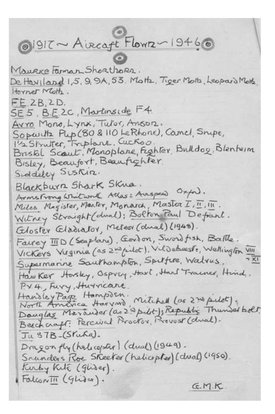
This list of aircraft flown 1917-1946 was given to the author by his grandfather â Guy Knocker, 2nd Lieutenant RGA attached RFC 1917-18; Group Captain RAF (retired) â in 1968 inside a three volume pictorial history of the RAF “Fi fty Years On ⦠(still flying right wing low!)”
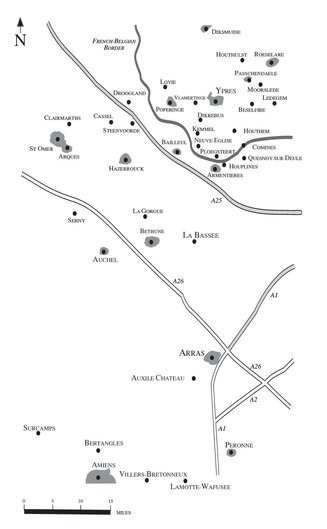
Table of Place Names mentioned in the diaries of
2nd Lieutenant Knocker
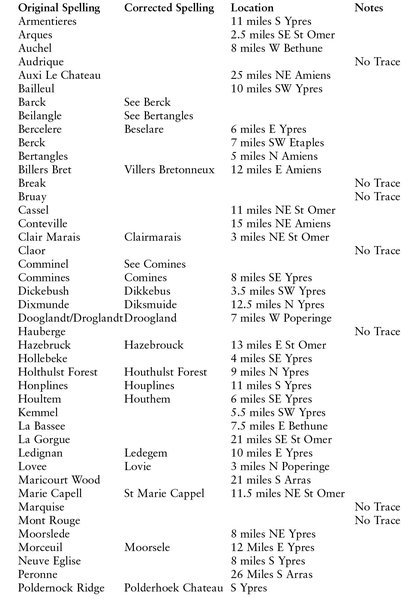
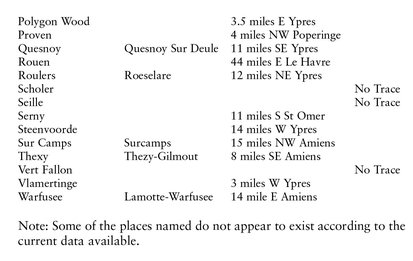
Acheson, Lieutenant Commander Leon
“Aladdin”
“Apache Concert”
Aprils
“Arlette”
Armentières
Arques
Auchel
Audrique
Auxi Le Chateau
Bailleul
Baker, 2nd Lieutenant B.E.
Baker, 2nd Lieutenant E.J.
Balfour, Lieutenant B.
“Bat”
Beilangle (âBertangles')
“Bella Donna”
Berck (âBarck')
“Bing Boys”
“Box o' Tricks”
Boyd, Lieutenant J.
Brasserie
Break
Bremridge, Lieutenant G.
“Brig Boy's”
Broadway
Brown, 2nd Lieutenant D.G.
Bruay
Cairn's
Caix
Caley
Callards
Cameron, 2nd Lieutenant J.D.
Cassel
Charing Cross
“Charlie Chaplin”
“Cheep”
“Chin Ling Soo”
“Chu Chin Chow”
Ciro's
Clairmarais (âClair Marais')
Claor
Cocks, Captain G.M.,
see
Cox
Coliseum
Comines (âCommines')
Conteville
Corner House
Corry, Lieutenant F.M.
Cottage Tea Rooms
Cowan, 2nd Lieutenant R.H.
Cox, Captain G.M.
Criterion
Cunningham, Major J.A.
Cutbill, 2nd Lieutenant E.H.
“Daddy Longlegs”
“Dear Brutus”
Dikkebus (âDickebush')
Diksmuide (âDixmunde')
Droogland (âDooglandt', âDroglandt')
Drury Lane
Duffus, Major C.
Dyer, 2nd Lieutenant H.A.
Eaton, Lieutenant E.C.
Elysee Palace
“Fair and Warmer”
Frascatis
“General Post”
Gilmour, Captain J. âJack'
“Going Up”
“Goodbye-e-e”
Gordon, Lieutenant E.G.S.
Gorringe, Lieutenant F.C.
Grand
Greasley, 2nd Lieutenant J.R.
Grosvenor Hotel
“Guiffon”
Hall, Lieutenant W.H.
Hancock, 2nd Lieutenant J.M.
Harrison, Lieutenant W.L.
Hauberge
Hazebrouck (âHazebruck')
Hemming, 2nd Lieutenant W.H.
Higgins, Captain W.W.
Hollebeke
Hotel de France
Houplines
Houtem (âHoultem')
Houthulst Forest
Howes, Major
Jenkins
Jewkes, 2nd Lieutenant J.L.
Jones, 2nd Lieutenant L.S.R.
“Jubilee Hall”
Keller, Lieutenant C.F.
Kelsey
Kemmel
Kennedy, 2nd Lieutenant J.G.
King's Cross
King-Clark, Alexander âKing'
King-Clark, Elspeth
King-Clark, Lieutenant Commander Robert
Kings Head
Knocker, Eileen Agnes âEily'
Knocker, Gladwys Mainwaring âGal' or âGally'
Knocker, Katherine Margaret Elizabeth Mainwaring âElsie'
Knocker, Mary Ethel âMay'
Knocker, Winifred Victoria âGin' or âGinny'
La Bassee
La Gorgue
Lamotte-Warfuseé (âWarfuseé)
Landon, Captain G. de L.
Le Commerce
Ledegem
Leitch, Captain A.A.
Les Gobelins
“Les Invalides”
Lonsdales
Lovie (âLovée')
Mackie's
“Maid of the Mountains”
Maison Lyons
Maricourt Wood
Marquise
Marshall, 2nd Lieutenant L.,
Matthews, 2nd Lieutenant C.D.
McCudden, Captain J.
McElroy, Captain G.E.H.
McKinnon, 2nd Lieutenant J.F.
McLeod Innes, 2nd Lieutenant P.
Miles, Major
Mont Rouge
Moore, Captain G.B.
Moorslede
Morrison, Captain K.S.
“Naughty Wife”
Nethersole, Major N.H.B.
Neuve Eglise
Northwood
“Nothing but the Truth”
Pavilion
Peacock, Captain E.F.
“Peg of my Heart”
Peronne
Pilcher, 2nd Lieutenant T.F.
Pitt, Lieutenant G.H.
Polderhoek Chateau (âPoldernock Ridge')
Polygon Wood
Poperinghe
Proven
Queens
Quesnoy Sur Deule
“Razzle Dazzle”
Reeves, Captain H.G.
Richthofen, Captain Baron von
Robb, 2nd Lieutenant R.E.
Roeselare (âRoulers')
“Romance”
Rosenthal, 2nd Lieutenant A.,
Rouen
“Roxana”
Sage, 2nd Lieutenant D.M.
Savoy
Scholer
Scott, Lieutenant D.H.
Serny
Severin
Shanks, Lieutenant D.
Skundles
“Soldier Boy”
Spreadbury, Lieutenant H.J.
Ste Marie Cappel
Steenvoorde
Surcamps (âSur Camps')
Swifts
Sydall, Captain C.B.
Symons, Captain H.L.
“Tabs”
“Tails Up”
“The 13th Chair”
“The Aristocrats”
“The Boy”
The Bull
“The Lilac Domino”
“The Live Wire”
“The Optimists”
The Red Lion
Thezy-Gilmout (âThezy')
“Three Cheers”
Tipperary
Tiptaft, 2nd Lieutenant C.P.
Towne, Lieutenant L.N.F.,
Troc
Trollope, Captain J.L.
Vert Fallon
Villers Bretonneux (âVillers Bret')
Vlamertinghe
Weedon, Captain L.S.
“When Knights were Bold”
Wigg, Lieutenant V.
Williams, Lieutenant T.M.
Withington, Captain T.E.
Wylie, 2nd Lieutenant A.E.
“Yes Uncle”
YMCA Club
“Zig Zag”
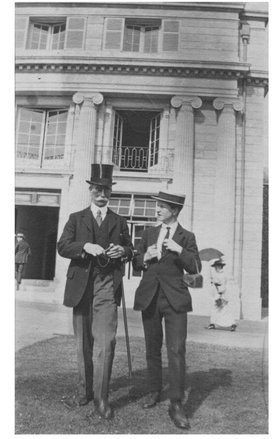
Guy Mainwaring Knocker and his father, Cuthbert, at Haileybury School.

Guy in Royal Military Academy uniform photographed with his father.
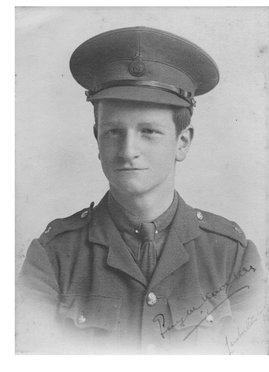
Guy in Royal Military Academy uniform, 1917.
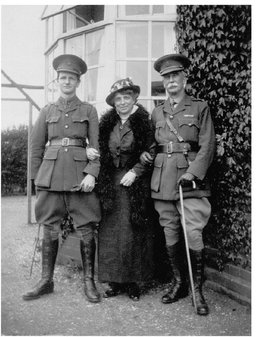
Guy, his mother and father, at Dover during 1917.
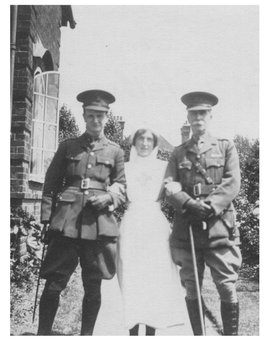
Guy with his sister, May, and father.
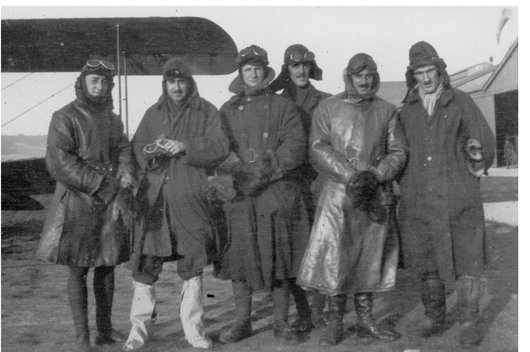
âA' Flight, 65 Squadron, RFC. Wye, Kent, October 1917. Left to right: 2nd Lt. A. Rosenthal, 2nd Lt. V. Wigg, 2nd Lt. G.M. Knocker, 2nd Lt. G. Bremridge, Capt. W.W. Higgins and Lt. K.S. Morrison.
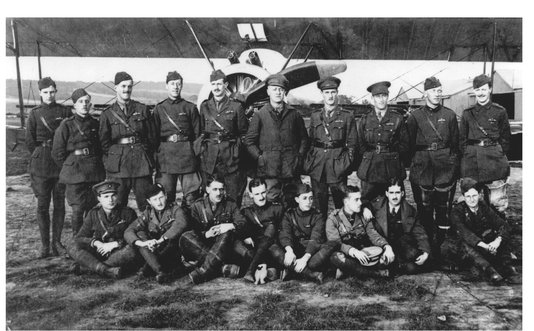
Pilots of 65 Squadron RFC at Wye, Kent (or Wyton, Cambs?), September 1917, in preparation for going to France. Standing, left to right: 2nd Lt. L. Marshall, Lt. B. Balfour, 2nd Lt. G. Bremridge, Lt. G.H. Pitt, 2nd Lt. E.H. Cutbill, Maj. J.A. Cunningham (OC), Capt. L.S. Weeden, Capt. T.E. Withington, Lt. W.L. Harrison, Lt. D.H. Scott MC. Seated, left to right: Lt. C.F. Keller, Lt. E.G.S. Gordon, Lt. G.M. Cox, Lt. K.S. Morrison, 2nd Lt. A. Rosenthal, Lt. H.L. Symons, 2nd Lt. V. Wigg, 2nd Lt. G.M. Knocker. (Courtesy of the Imperial War Museum, London. Q67792)
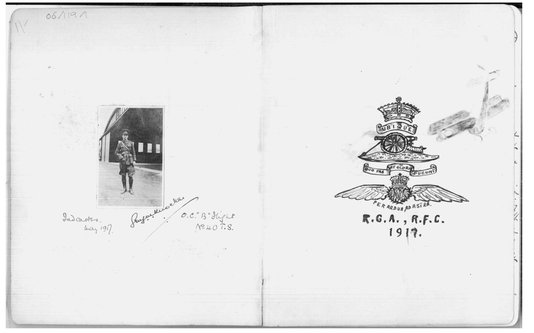
The front of Guy's Diary. A photograph of him as OC âB' Flight No. 40 Training School taken in 1917 faces his drawings of the RGA and RFC badges.
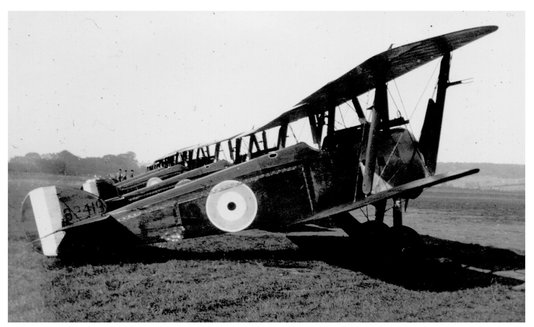
Sopwith Camels of âA' Flight, 65 Squadron, RFC. The aeroplane nearest, B2419, was Guy's aircraft and was called âPooh Bah'.
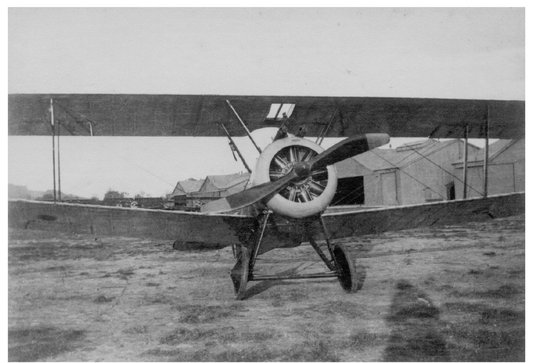
Pooh Bah at Wye, 1917.
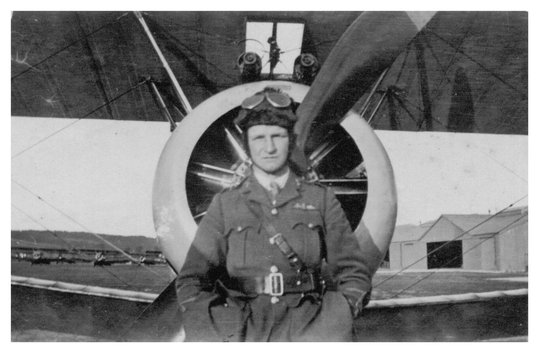
Guy with his Sopwith Camel.
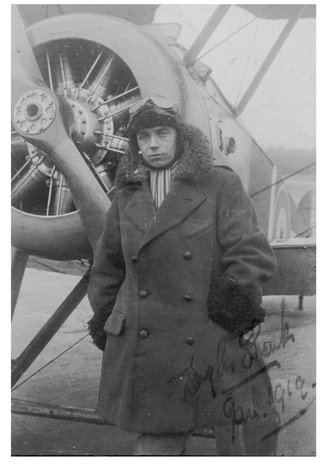
Lieutenant Douglas Shanks and Camel from 65 Squadron. He was injured in a flying accident on 31 January 1918, although the photograph is dated January 1919.
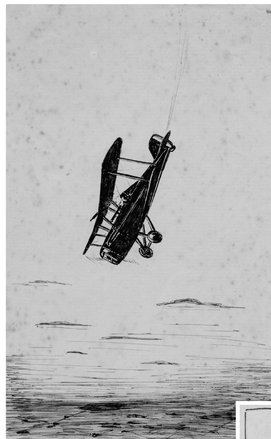
A pen and ink sketch by Guy of a British SE 5 aircraft.
